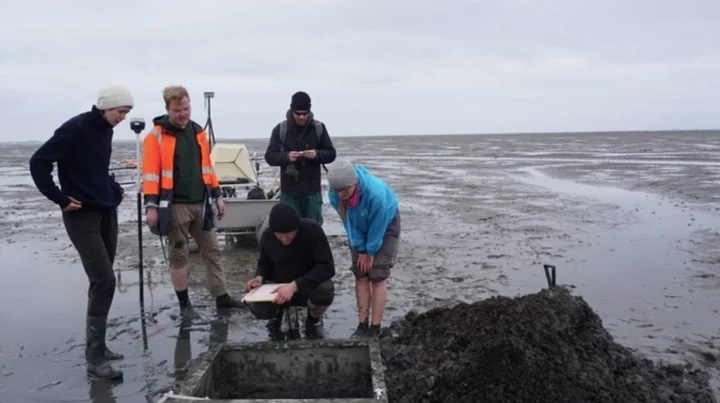
Europe's 'City of Atlantis' discovered after being lost for 600 years
The remains of a church from a sunken town known as the 'Atlantis of the North Sea' has been discovered beneath the mud on Germany's coast. The church is believed to be part of a site called 'Rungholt' located in the Wadden Sea. The town, which was previously thought to be a local legend, has not been seen since 1362 after it was submerged beneath the waves during an intense storm. However, new research has shown that the town really did exist and that they had built reinforcements around the settlement to protect them from the severe elements. The research was carried out on the area by archeologists from Kiel University, Johannes Gutenberg University Mainz, the Center for Baltic and Scandinavian Archaeology, and the State Archaeology Department Schleswig-Holstein. Sign up to our free Indy100 weekly newsletter Searching the Wadden Sea which is the longest stretch of intertidal sand and mud flats on Earth, the team, using geophysical imaging technology found man-made mounds that had been constructed to protect the town against the tides. Amongst this structure were the foundations of a building which the team determined had to be a church which may have been the location of the town centre. In a statement, Dr. Dennis Wilken, a geophysicist at Kiel University of Kiel University said: "Settlement remains hidden under the mudflats are first localized and mapped over a wide area using various geophysical methods such as magnetic gradiometry, electromagnetic induction, and seismics." Dr. Hanna Hadler from the Institute of Geography at Mainz University added: "Based on this prospection, we selectively take sediment cores that not only allow us to make statements about spatial and temporal relationships of settlement structures, but also about landscape development." Dr. Ruth Blankenfeldt, an archaeologist at ZBSA also suggested that the "special feature of the find lies in the significance of the church as the centre of a settlement structure, which in its size must be interpreted as a parish with superordinate function." The storm that washed away Rungholt has gone down in history as one of the largest to ever hit the region, affecting not just Germany but also the Netherlands, Denmark and the UK. The storm happened on January 1362 and has since been referred to as "the great drowning of men." According to historical reports, Rungholt was once a busy trading port for fishermen but was also populated by taverns, brothels and churches. Have your say in our news democracy. Click the upvote icon at the top of the page to help raise this article through the indy100 rankings.
2023-05-28 19:22
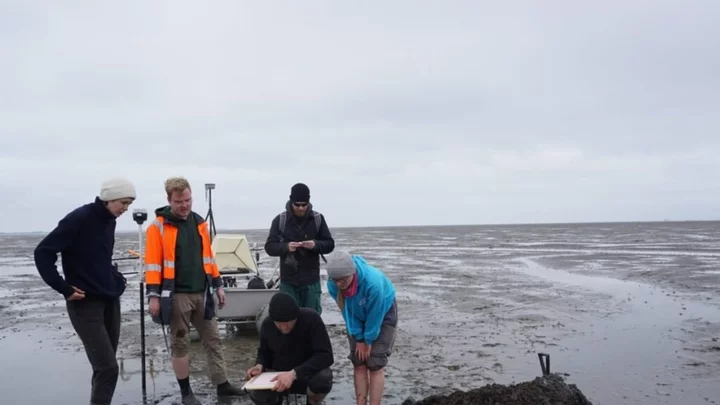
Remains of the 'Atlantis of the North Sea' discovered in Germany
The remains of a church from a sunken town known as the 'Atlantis of the North Sea' has been discovered beneath the mud on Germany's coast. The church is believed to be part of a site called 'Rungholt' located in the Wadden Sea. The town, which was previously thought to be a local legend, has not been seen since 1362 after it was submerged beneath the waves during an intense storm. However, new research has shown that the town really did exist and that they had built reinforcements around the settlement to protect them from the severe elements. The research was carried out on the area by archeologists from Kiel University, Johannes Gutenberg University Mainz, the Center for Baltic and Scandinavian Archaeology, and the State Archaeology Department Schleswig-Holstein. Sign up to our free Indy100 weekly newsletter Searching the Wadden Sea which is the longest stretch of intertidal sand and mud flats on Earth, the team, using geophysical imaging technology found man-made mounds that had been constructed to protect the town against the tides. Amongst this structure were the foundations of a building which the team determined had to be a church which may have been the location of the town centre. In a statement, Dr. Dennis Wilken, a geophysicist at Kiel University of Kiel University said: "Settlement remains hidden under the mudflats are first localized and mapped over a wide area using various geophysical methods such as magnetic gradiometry, electromagnetic induction, and seismics." Dr. Hanna Hadler from the Institute of Geography at Mainz University added: "Based on this prospection, we selectively take sediment cores that not only allow us to make statements about spatial and temporal relationships of settlement structures, but also about landscape development." Dr. Ruth Blankenfeldt, an archaeologist at ZBSA also suggested that the "special feature of the find lies in the significance of the church as the centre of a settlement structure, which in its size must be interpreted as a parish with superordinate function." The storm that washed away Rungholt has gone down in history as one of the largest to ever hit the region, affecting not just Germany but also the Netherlands, Denmark and the UK. The storm happened on January 1362 and has since been referred to as "the great drowning of men." According to historical reports, Rungholt was once a busy trading port for fishermen but was also populated by taverns, brothels and churches. Have your say in our news democracy. Click the upvote icon at the top of the page to help raise this article through the indy100 rankings.
2023-05-27 23:48
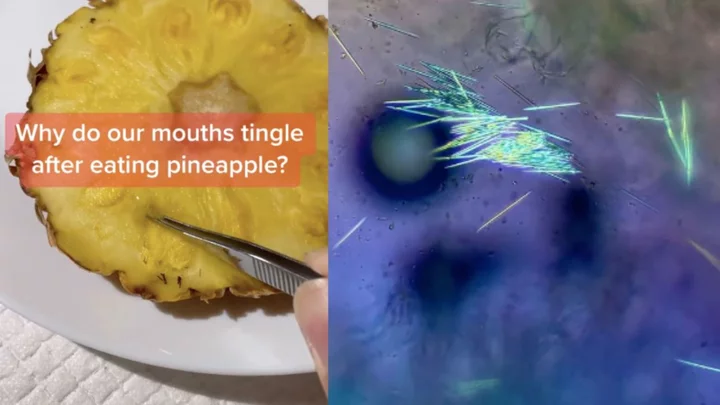
Pineapple 'needles' revelation has people questioning whether they'll eat the fruit again
A revelation about pineapples only made noticeable thanks to a TikTok account and a microscope, has people reevaluating whether they are allergic to the fruit or not. You may have noticed that whenever you've eaten a chunk of the delicious citrus fruit, you are sometimes greeted with an odd tingling sensation in your mouth. Well, if you've ever been curious about what that actually is then the TikTok account SF Microscopy is here to help. The account analyses all sorts of things under a microscope and exposes all the fascinating and dare we say worrying things that lie within everyday objects that the naked eye cannot see. One of the biggest videos on the account, with 35 million views, is about a pineapple. Sign up to our free Indy100 weekly newsletter In the caption, the person behind the account writes: "One of my favorite fruits is pineapple, but every time I eat them, my mouth tingles. I read that the fruit contains raphides! Kiwis, grapes, taro, and yams also have large amounts of these crystals. These needles serve as a defensive function against insect herbivores to deter them from eating the plant’s fruits and protect the seeds. The needles work with other chemical substances, like bromelain in the pineapple, to amplify the effects." If that sounds a bit farfetched then take a look at the video for yourself and you might find that its even more alarming than you might have imagined. @sf_microscopy One of my favorite fruits is pineapple, but every time I eat them, my mouth tingles. I read that the fruit contains raphides! Kiwis, grapes, taro, and yams also have large amounts of these crystals. These needles serve as a defensive function against insect herbivors to deter them from eating the plant’s fruits and protect the seeds. The needles work with other chemcial substances, like bromelain in the pineapple, to amplify the effects. #microscope #microbiology #underthemicroscope #microscopy #microcosmos #nature #pineapple #crystals #fyp #fypage #fypシ The fact that these needles are real has people second-guessing the feeling they experience when they eat pineapples. One person wrote: "My mouth be sore as hell after going crazy on them pineapples & kiwis." Another added: "So ummmm…I’m not allergic to pineapple????" A third said: "Makes sense that when i accidentally inhaled pineapple juice i just about died." While a fourth person said: "It’s gonna stop me i dont feel like being stabbed." Will you stop eating pineapples now that you know this? I think this writer might be willing to live in blissful, delicious ignorance. Have your say in our news democracy. Click the upvote icon at the top of the page to help raise this article through the indy100 rankings.
2023-05-27 19:24
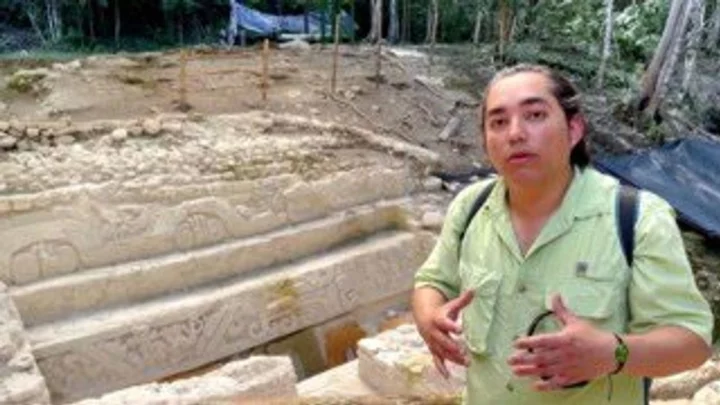
Scientists discover 'impossible' ancient Mayan city in remote jungle
It feels like every day there’s a science story that comes along ready to blow our tiny minds, and today is no exception. A series of ancient interconnected cities have been discovered in the remote El Mirador jungle Guatemala, and it’s changing our entire understanding of the ancient civilisation. More than 400 settlements have been uncovered with some dating back as far as 1,000 BC. They’re linked by roads too, and it’s led them to be described as “the first freeway system in the world”. Sign up to our free Indy100 weekly newsletter Richard Hansen, a research professor at the University of Idaho, is an expert on the project and he’d called the findings a “game-changer”. It was previously thought that the Mayan peoples were nomadic, but these cities have changed the scientific community’s understanding. Speaking to the Washington Post, Hansen said: "We now know that the Preclassic period was one of extraordinary complexity and architectural sophistication, with some of the largest buildings in world history being constructed during this time.” On top of the 110 miles of interconnected roads, the discoveries also showed evidence of organised agriculture and even hydraulic systems. The findings are the result of work which first began in 2015, which saw lidar technology uncovered signs of ancient structures below the surface. Archaeologist Enrique Hernández, from San Carlos University said about the findings: “Now there are more than 900 [settlements]… We [couldn’t] see that before. It was impossible,” he said. Have your say in our news democracy. Click the upvote icon at the top of the page to help raise this article through the indy100 rankings.
2023-05-27 15:51
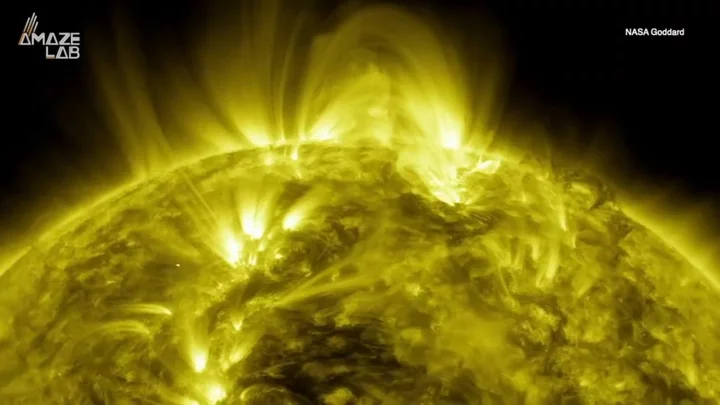
‘Monster stars’ 10,000 times bigger than the Sun detected for first time
Scientists have been peering into the depths of space, looking right back at the early days of the universe, and they’ve found something very interesting indeed. Researchers using the James Webb Space Telescope have come across a discovery that indicates some of the very earliest stars to ever form in the universe were staggering in scale, measuring 10,000 times bigger than the Sun. "Today, thanks to the data collected by the James-Webb Space Telescope, we believe we have found a first clue of the presence of these extraordinary stars," says astrophysicist Corinne Charbonnel of the University of Geneva in Switzerland, in research published in Astronomy & Astrophysics. These features are huge collections of between 100,000 and 1 million stars known as globular clusters, which all feature similar properties. Scientists estimate that they were all formed at the same time. Sign up to our free Indy100 weekly newsletter They’re remnants of the ancient universe and have been described by researchers as "fossils". The cores of these stars are much hotter than those we see in stars today, and scientists suggest it could be down to an excess of hydrogen burning at high temperatures. It’s thought that smaller stars collided with the supermassive stars and relished their energy. However, now most of these global clusters are approaching the very end of their life spans. "Globular clusters are between 10 and 13 billion years old, whereas the maximum lifespan of superstars is two million years," said Mark Gieles, previously at the University of Surrey but now at the University of Barcelona, back in 2018. "They therefore disappeared very early from the clusters that are currently observable. Only indirect traces remain." The researcher states: "If the supermassive star scenario can be firmed up by future studies, this would provide an important step for our understanding of globular clusters and for the formation of supermassive stars in general, with numerous important implications.” Have your say in our news democracy. Click the upvote icon at the top of the page to help raise this article through the indy100 rankings.
2023-05-26 23:22

Captcha is now asking users to identify objects that don't exist
Captcha is trying to get people using Discord a to identify objects that do not exist. As reported by Vice, multiple people using the platform are being shown a “Yoko,” which looks like a mix between a snail and a yoyo, and has been generated by AI, or other AI generated images like puzzle cubes. Meanwhile, two months ago, a Redditor noticed Discord was asking it to distinguish AI generated soccer players amidst a group of pictures of people playing hockey and golf. Sign up to our free Indy100 weekly newsletter Others have complained that images being generated are just 'awful.' Discord’s captchas are run by a company called hCaptcha. “The technology that generates these prompts is proprietary to our third-party partner and Discord does not directly determine what is presented to users,” Discord told Motherboard. “While most hCaptcha interactions do not result in a visual challenge, many variants are used at any given time. “This particular question was a brief test seen by a small number of people, but the sheer scale of hCaptcha (hundreds of millions of users) means that when even a few folks are surprised by a challenge this often produces some tweets.” Have your say in our news democracy. Click the upvote icon at the top of the page to help raise this article through the indy100 rankings.
2023-05-26 22:28
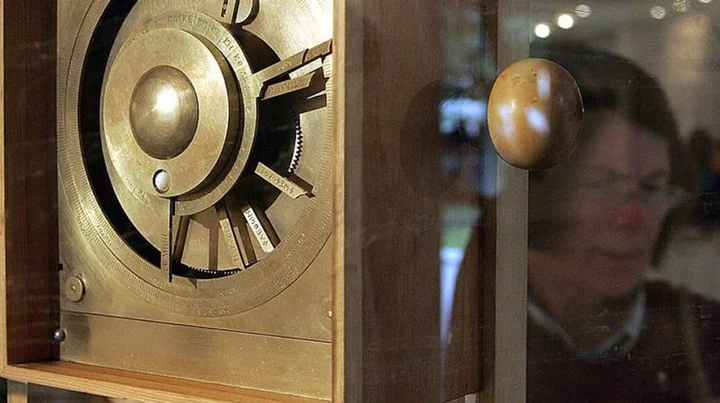
Discovery of '2000-year-old computer' leaves scientists baffled
Scientists have been left baffled by the discovery of the wreck of a 2,000-year-old “computer” that is amazingly complex. The Antikythera mechanism – an astronomical calendar – has been dubbed “‘the first computer” and has baffled scientists for generations after it was first discovered inside a Greek shipwreck in 1901. The device is a hand-powered time-keeping instrument that used a wing-up system to track the sun, moon and planets’ celestial time. It also worked as a calendar, tracking the phases of the Moon and the timing of eclipses. Despite sounding relatively simple, the mechanism was actually ahead of its time, being more technically sophisticated than any other tool that was invented over the next 1,000 years. In its current condition, the mechanism is in 82 separate fragments with only a third of its original structure remaining, including 30 corroded bronze gearwheels. Sign up to our free Indy100 weekly newsletter Research into the device from experts at University College London involved 3D computer modelling and helped them solve the mystery of how the device worked, revealing a “creation of genius”. Adam Wojcik, a materials scientist at UCL said at the time: “We believe that our reconstruction fits all the evidence that scientists have gleaned from the extant remains to date.” They theorised that the device tracked the movement of the sun, moon and planets on concentric rings, as the ancient Greeks believed that the sun and planets revolved around Earth, rather than the sun. The researchers explained in Scientific Reports: “Solving this complex 3D puzzle reveals a creation of genius—combining cycles from Babylonian astronomy, mathematics from Plato’s Academy and ancient Greek astronomical theories.” Have your say in our news democracy. Click the upvote icon at the top of the page to help raise this article through the indy100 rankings.
2023-05-26 20:45

Man suffers 'triple penis fracture after hearing a 'snap' during sex
One unlucky guy lived out every man’s worst nightmare recently, after suffering a “triple penis fracture”. A man from Tanzania was hospitalised after hearing his penis “snap” during sex. Details of the grisly injury were recorded in the International Journal of Surgery Case Reports. The “snap” happened “when the penis slipped out, lost the way” and struck his female partner “as he was trying to reinsert it”. It’s enough to make anyone wince, and the extent of his injury was revealed after he took himself to hospital. Sign up to our free Indy100 weekly newsletter Doctors took a look and found the penis to be severely swollen and covered in blood. They diagnosed him with having a “fractured” penis, which refers to a rupture in the fibrous connective tissue, called the tunica albuginea. Not only that, but an MRI scan also showed that there were three clear points of injury along the tunica albugine, with the main “fractures” in the erectile tissues known as the corpora cavernosa and the corpus spongiosum. The man was taken into surgery before being discharged three days later. He also had a catheter fitted in his urethra which was removed after three weeks. “He was seen at the clinic six months post-operative where he reported having resumed his sexual life with no any difficulties and the penile shaft looked OK,” his doctors said in the report. It sounds like all kinds of pain, and it’s an injury that is becoming more and more common. The NHS revealed stats in 2020 that showed 38 percent rise in such injuries from 2014 to 2020. Doctors speculated at the time that it could be down to pornography viewing habits leading to more couples trying unusual sexual positions, as well as an increase in the use of Viagra. Have your say in our news democracy. Click the upvote icon at the top of the page to help raise this article through the indy100 rankings.
2023-05-26 18:47

Saturn’s iconic rings are disappearing
Saturn’s rings might disappear pretty soon astronomically speaking, according to new research. A new analysis of data captured by NASA’s Cassini mission, which orbited the planet between 2004 and 2017, has revealed new insights into when the seven rings were formed and how long they might last. During Cassini’s Grand Finale, when the spacecraft completed 22 orbits in which it passed between Saturn and its rings, the researchers observed that the rings were losing many tons of mass per second, which means the rings will only be around another few hundred million years at most. “We have shown that massive rings like Saturn’s do not last long,” said Paul Estrada, research scientist at NASA’s Ames Research Center in Mountain View, California, and a coauthor of the studies, in a statement. “One can speculate that the relatively puny rings around the other ice and gas giants in our solar system are leftover remnants of rings that were once massive like Saturn’s. Maybe some time in the not-so-distant future, astronomically speaking, after Saturn’s rings are ground down, they will look more like the sparse rings of Uranus.” Sign up to our free Indy100 weekly newsletter Saturn’s rings are made mostly of ice but have a small amount of rocky dust created by broken asteroid fragments and micrometeoroids colliding with the rings. The research also found that the rings appeared long after Saturn’s initial formation, and were still forming when dinosaurs roamed the Earth. “Our inescapable conclusion is that Saturn’s rings must be relatively young by astronomical standards, just a few hundred million years old,” said Richard Durisen, professor emeritus of astronomy at Indiana University Bloomington and lead author of the studies in a statement. “If you look at Saturn’s satellite system, there are other hints that something dramatic happened there in the last few hundred million years. If Saturn’s rings are not as old as the planet, that means something happened in order to form their incredible structure, and that is very exciting to study.” Have your say in our news democracy. Click the upvote icon at the top of the page to help raise this article through the indy100 rankings.
2023-05-26 15:59
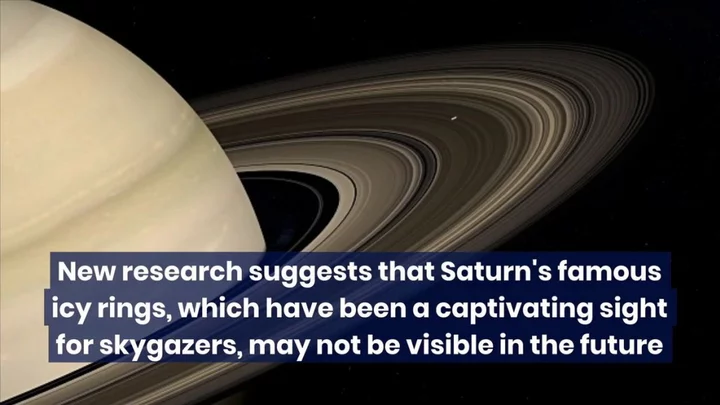
Saturn’s rings are disappearing and could be gone relatively soon
Saturn’s rings might disappear pretty soon astronomically speaking, according to new research. A new analysis of data captured by NASA’s Cassini mission, which orbited the planet between 2004 and 2017, has revealed new insights into when the seven rings were formed and how long they might last. During Cassini’s Grand Finale, when the spacecraft completed 22 orbits in which it passed between Saturn and its rings, the researchers observed that the rings were losing many tons of mass per second, which means the rings will only be around another few hundred million years at most. “We have shown that massive rings like Saturn’s do not last long,” said Paul Estrada, research scientist at NASA’s Ames Research Center in Mountain View, California, and a coauthor of the studies, in a statement. “One can speculate that the relatively puny rings around the other ice and gas giants in our solar system are leftover remnants of rings that were once massive like Saturn’s. Maybe some time in the not-so-distant future, astronomically speaking, after Saturn’s rings are ground down, they will look more like the sparse rings of Uranus.” Sign up to our free Indy100 weekly newsletter Saturn’s rings are made mostly of ice but have a small amount of rocky dust created by broken asteroid fragments and micrometeoroids colliding with the rings. The research also found that the rings appeared long after Saturn’s initial formation, and were still forming when dinosaurs roamed the Earth. “Our inescapable conclusion is that Saturn’s rings must be relatively young by astronomical standards, just a few hundred million years old,” said Richard Durisen, professor emeritus of astronomy at Indiana University Bloomington and lead author of the studies in a statement. “If you look at Saturn’s satellite system, there are other hints that something dramatic happened there in the last few hundred million years. If Saturn’s rings are not as old as the planet, that means something happened in order to form their incredible structure, and that is very exciting to study.” Have your say in our news democracy. Click the upvote icon at the top of the page to help raise this article through the indy100 rankings.
2023-05-26 00:15
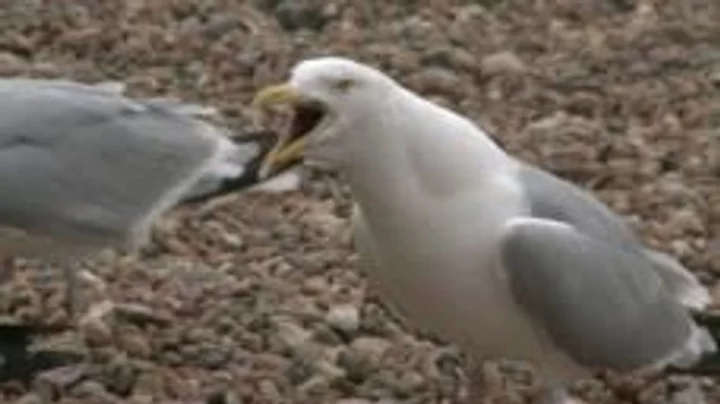
Scientists discover why gulls always prey on people's food
Anyone who has braved a stroll along England's coastline will be aware of seagulls' tyrannical regime. They prey on people eating chips, they swoop down on unsuspecting holidaymakers licking an ice cream, and they can be quite aggressive indeed. And now, terrifying research has revealed that they are more calculating than you may have previously thought. A University of Sussex study on herring gulls at Brighton beach found that the birds choose what to eat by watching what humans are enjoying. Scientists taped green (salt and vinegar) and blue (cheese and onion) packets of Walkers crisps to tiles and placed them a few metres from gulls on Brighton beach and filmed the birds’ behaviour from a distance. In some cases, the researchers ate from one of the bags of crisps. When the scientists didn't eat, less than a fifth of gulls approached the crisp packets placed nearby. But when the researchers were snacking on crisps, 48 per cent of the birds came to check out the packets. Nearly 40 per cent of such approaches ended with gulls pecking at the crisp packets, and of these, 95 per cent were directed at the same colour packet as the scientist was eating from. Sign up to our free Indy100 weekly newsletter “We’ve shown that adult gulls are able to pay attention to the behaviour of humans and apply that to their own foraging choices,” said Franziska Feist, a biologist and first author on the study. “Given that the urbanisation of gulls is very recent, this ability must come from the gulls’ general smartness and behavioural flexibility.” “It is likely that simply deterring the public from directly feeding gulls may not be enough,” Feist said. “They are still able to observe what we eat and that would inform their ability to target waste, litter and so on.” Dr Madeleine Goumas, an expert on herring gulls at Exeter University who was not involved in the study, said: “We already know from previous research that gulls use information from people when they’re searching for food. “This study shows that we aren’t only drawing gulls’ attention to where food is, but they also learn about the type of food we’re eating. Knowing this may have implications for how we reduce negative interactions between humans and gulls, as we seem to be inadvertently teaching gulls to exploit new food items.” Meanwhile, past alarming research revealed that gulls prefer food that has been touched by people. Overall, it's giving Alfred Hitchcock's The Birds. Have your say in our news democracy. Click the upvote icon at the top of the page to help raise this article through the indy100 rankings.
2023-05-24 22:20

'Impossible' ancient Mayan city discovered in remote jungle
It feels like every day there’s a science story that comes along ready to blow our tiny minds, and today is no exception. A series of ancient interconnected cities have been discovered in the remote El Mirador jungle Guatemala, and it’s changing our entire understanding of the ancient civilisation. More than 400 settlements have been uncovered with some dating back as far as 1,000 BC. They’re linked by roads too, and it’s led them to be described as “the first freeway system in the world”. Sign up to our free Indy100 weekly newsletter Richard Hansen, a research professor at the University of Idaho, is an expert on the project and he’d called the findings a “game-changer”. It was previously thought that the Mayan peoples were nomadic, but these cities have changed the scientific community’s understanding. Speaking to the Washington Post, Hansen said: "We now know that the Preclassic period was one of extraordinary complexity and architectural sophistication, with some of the largest buildings in world history being constructed during this time.” On top of the 110 miles of interconnected roads, the discoveries also showed evidence of organised agriculture and even hydraulic systems. The findings are the result of work which first began in 2015, which saw lidar technology uncovered signs of ancient structures below the surface. Archaeologist Enrique Hernández, from San Carlos University said about the findings: “Now there are more than 900 [settlements]… We [couldn’t] see that before. It was impossible,” he said. Have your say in our news democracy. Click the upvote icon at the top of the page to help raise this article through the indy100 rankings.
2023-05-24 19:17
